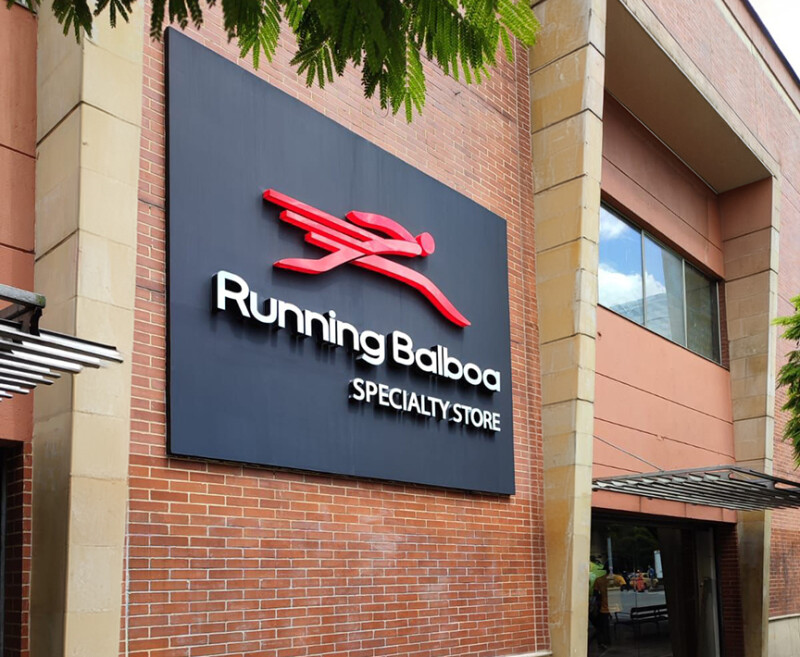Nothing brings validation like a good Latin phrase. How about this one “audentes Fortuna iuvat”? It has a nice ring to it, and the translation is equally profound: “Fortune favors the brave.”
There is much conversation about conservation, especially at this time of year as Earth Day is celebrated April 22. We all know that we only have one planet that is fit for running and that is the example we strive to set in our spheres of influence. Accountability keeps us on the straight and narrow and helps us sleep peacefully night — that and a regular diet of running.
While lacing up your running shoes in the morning (or evening, lunch or all three), you’d love to be confident that the materials that protect you on the run, treat the environment kindly as well. To find out just what retailers and their customers can expect in terms of eco-efforts, Running Insight reached out to two of the many forward-thinking brands – Brooks and Nike – to discuss their market-leading efforts in developing and promoting sustainability in their running shoes.
How do you address sustainable practices for the components of your running shoes?
Brooks: We aim to reduce the environmental impact of our running gear. To do this, we’ve created our sustainable consumption strategy in support of the United Nations Sustainable Development Goal #12: Responsible Consumption & Production. We take a holistic approach, managing the impact of our products on the planet across their lifecycles, from raw materials to product use and end-of-life. We’ve identified key interventions to address that impact: we minimize our reliance on non-renewable resources and use more sustainable materials in our product, minimize material waste generated during manufacturing, introduce a fully circular product and take responsibility for our product after its usable life.
Nike: Nike is on a journey to reinvent, innovate and source materials that make its circular vision a reality. That’s why we’re so focused on increasing usage of environmentally preferred options across our five key materials — polyester, cotton, leather, foam and rubber.
By focusing on improving the environmental impact of materials within our products, we have the opportunity to innovate with performance materials that drive towards our emissions reduction target at scale.
For footwear, we continue to focus on improving specific, high-volume materials (polyester, rubber, foam and leather), through significant efforts to increase the use of recycled versions of these materials and innovate methods to make and support their use at scale.
What recent developments/techniques have influenced your net-zero shoe manufacturing processes?
Nike: At our size and scale, we are regularly monitoring our footprint and optimizing for the best possible impact. Emissions associated with our product constitutes more than 75 percent of our carbon footprint, with material choice accounting for 35 percent of that. For this reason, materials – and the energy used to produce them – present an opportunity to reduce Greenhouse Gas (GHG) emissions. We remain focused on increasing the use of environmentally preferred materials (EPMs), adopting and scaling recycled and lower-impact materials without compromising the performance of our products.
Brooks: By leveraging insights from our GHG emissions inventory and product carbon footprint assessment, we can identify strategies to reduce GHG emissions. These strategies form the basis of our climate transition plan and our blueprint to achieve our science-based GHG emissions targets. Key strategies in our climate transition plan include manufacturing energy use and continuing to incorporate recycled and bio-based content into raw materials, among others.
How has this improved your environmental footprint?
Brooks: Last year, Brooks purchased 3050 MWH (megawatt-hours) of renewable electricity to reduce GHG emissions from Brooks-operated facilities, and achieved 12 percent renewable energy use at our Tier 1 footwear factories. Brooks is also minimizing air freight and relying on renewable fuels in ocean transport that could contribute to nearly 30 percent of needed GHG emissions reductions. In alignment with this goal, Brooks partnered with ZEMBA, a first-of-its-kind buyers’ group working to accelerate the most sustainable, scalable and economically viable solutions for the maritime sector, to support our commitment to low-emission maritime shipping for 40 percent of our footwear and apparel.
Last fall, Brooks introduced its DNA Tuned midsole in the all-new Glycerin Max and Glycerin 22. This midsole is created with a dual-cell technique and includes bio-based content derived from sugarcane, with 18 percent of the midsole made from bio-based content. Using bio-based content in our midsoles is an important strategy to help reduce our reliance on foam from non-renewable resources and reducing GHG emissions.
Nike: Our motto is “There is no finish line.” Moving forward, innovation remains key, as we explore new recycling methods, bio-based alternative materials and more energy-efficient production techniques.
Transformative change requires targeted, collective effort. Through collaboration, both across the company and with suppliers, we are focusing on addressing emissions associated with high-volume materials by increasing recycling and reuse. We are also developing the necessary business strategies to enable more sustainable solutions that can be applied at scale across our product lines.
What impact does end of product life/recycling play in your processes?
Nike: Circularity is a guiding design principle for us and we’re working to create products that last longer and are designed with their end in mind. Here are a few examples of how we are helping extend the life of our products and materials:
• Through our Circular Design Guide, we have shared with the world a circular approach to design, manufacture and reuse of products with as little impact on the environment as possible.
• We are re-imagining waste streams to create value through the recycling of our own products. What began as a grassroots initiative in 1992 to repurpose shoes headed for landfills is now a global sustainability program that helps transform manufacturing scrap and end-of-life shoes into recycled Nike Grind materials.
• We are also exploring business models that support the secondhand market, like Re-Creation. The Nike Re-Creation program locally collects vintage and dead stock pieces, using them to create new locally designed and manufactured products.
• We recycle and donate used athletic shoes and clothing. You drop off used athletic gear at a participating Nike retail store and we sort it to determine what can be recycled and what can be cleaned and then donated. Either way, together we can help divert materials from landfills.
• Nike Refurbished extends the life of eligible products by taking like-new, gently worn and slightly imperfect kicks, refurbishing them by hand and offering them at select Nike factory, Nike unite and Nike community stores.
To become fully circular, we must build complex systems where waste is minimized and what waste is created becomes the source for new materials, reducing our need for virgin materials. We’ve developed circular solutions that cover how products are sourced, made, used, returned, reused and ultimately reimagined as something new.
To achieve this, our product teams use circular design principles to extend product life, fuel creativity and reimagine apparel and footwear design with circularity in mind. At the same time, our circularity programs look beyond product design to create new markets for materials previously seen as waste.

Brooks: Our efforts span beyond raw material choices to considerations of the overall environmental impact of materials and the full life cycle of our finished product. One life cycle stage we focus on is the processing of raw materials into a finished material, such as textile knitting, textile dyeing and midsole manufacturing, all of which contribute 35 percent of our total GHG emissions.
To enable circular product, we need to create pathways for our product to be returned after runners have finished logging their miles. Through our founding membership of The Footwear Collective, an initiative dedicated to advancing circularity in the footwear industry, we are dedicating resources to support the development of a collective take-back program. The Footwear Collective will play a critical role in helping achieve our circular ambitions, a key part of our Planet 2030 strategy to protect the planet we run on. We recognize the complexity of developing circular systems and the importance in collaborating within the footwear industry to unlock solutions that will scale and accelerate our journey to circularity.
Additionally, Brooks ReStart is a program offering customers a more sustainable way to purchase Brooks product by offering new homes for lightly used shoes at a variety of price points before they’ve run their last mile. Brooks’ sustainability initiatives are dedicated to protecting the planet we run on. The launch of ReStart is an important step in the brand’s long-term, science-backed approach to sustainability.
What next steps are in development/implementation to address greener earth efforts?
Nike: Although we’ve made great progress by reducing our owned and operated emissions by nearly 70 percent and our scope 3 emissions are down 20 percent since 2020, looking ahead we know there is still important work to do.
Climate Change is impacting athletes. We are seeing it in the form of extreme weather events such as heat waves, floods and droughts. It’s impacting the health, performance and participation of athletes of all levels, threatening the future of sport.
To address climate change’s impact on sport and our business, Nike is helping to innovate and collaborating to find ways to help protect the planet and with it, the ability of athletes to participate in sport.
Nike is focused on driving climate action in four strategic impact areas — carbon, waste, water and chemistry. Helping mitigate climate change requires us to more effectively catalyze decarbonization efforts across our value chain, try to find ways to reduce and recycle waste, optimize water usage and develop cleaner chemistries that minimize our environmental impact and, in turn, help protect the planet.







